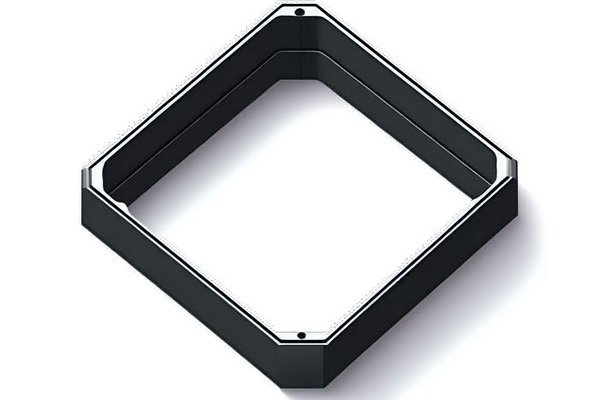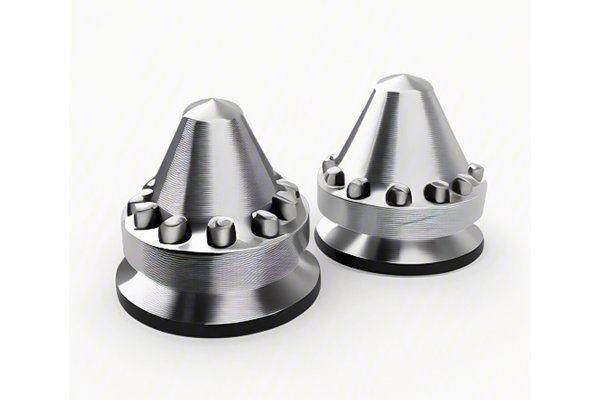Did you know that the global medical device market is projected to reach a staggering $600 billion by 2024? This growth is driven by advances in technology and precision manufacturing. With medical devices becoming increasingly sophisticated, the demand for high-quality, custom-made components has never been higher. One of the most efficient solutions for achieving such precision is Computer Numerical Control (CNC) machining, particularly for custom medical-grade components.
The Importance of Precision in Medical Devices
In the medical field, a small mistake can have significant consequences. That’s why precision and reliability are paramount. Medical devices must adhere to stringent regulations and standards that ensure safety, efficacy, and performance. CNC machining stands out as a process that can produce intricate and precise parts, essential for a wide variety of applications such as surgical instruments, implants, and diagnostic equipment.
What is CNC Machining?
CNC machining is a subtractive manufacturing process that uses computer-controlled tools to remove material from a workpiece. The process can encompass various techniques: milling, turning, drilling, and grinding, each offering unique advantages. The key element of CNC machining is its ability to produce complex shapes with high precision and repeatability, making it an ideal choice for industries that require consistent quality, like the medical field.
The Benefits of CNC Machining for Medical-Grade Components
CNC machining operates under advanced software systems that enable the machine to carry out intricate tasks with minimal human error. The ability to achieve tight tolerances is critical in the medical sector, where components need to fit correctly and function seamlessly.
CNC machining can handle a wide range of materials, including metals like stainless steel and titanium, as well as plastics and specialized alloys. Each of these materials has unique properties that make them suitable for various medical applications. For instance, titanium is often used in implants due to its biocompatibility and strength, while polymers can be molded into precise, ergonomic shapes for surgical instruments.
The healthcare sector often demands quick turnarounds for new devices. CNC machining allows for rapid prototyping, meaning companies can create functional prototypes quickly and efficiently. This is crucial for testing designs, evaluating functionality, and gathering feedback before full-scale production.
CNC machining offers flexibility when it comes to production scale. Whether a company is looking for a single custom component or mass production of thousands of identical pieces, CNC machining can adapt accordingly. This makes it an economically viable option for startups and established companies alike.
By following precise specifications, CNC machining minimizes material waste. Less waste not only reduces costs but also aligns with sustainability efforts, a growing concern in the manufacturing sector.
High-quality components are essential in the medical field; therefore, consistency is key. Once a CNC machine is programmed, it can produce identical parts with high reliability. This leads to uniform quality across production runs, which is critical for regulatory compliance.
Challenges in CNC Machining for Medical-Grade Components
While CNC machining can save money in the long term due to its efficiency and precision, initial costs can be high. This includes investment in machinery, software, and skilled labor. However, for companies producing critical medical devices, the benefits often outweigh these costs.
Navigating the regulatory landscape can be daunting. Manufacturers must ensure compliance with standards set by organizations like the FDA (Food and Drug Administration) and ISO (International Organization for Standardization). This can involve extensive documentation and quality assurance processes. Nevertheless, working with experienced CNC machining providers who understand these requirements can mitigate risks.
With the rapid evolution of technology in CNC machining, there is a growing skill gap in the labor market. Companies need skilled operators who can manage and maintain advanced CNC machinery. Continued investment in training programs and partnerships with educational institutions can help bridge this gap.
CNC Machining Techniques for Medical-Grade Components
CNC Milling
Milling involves the use of rotating cutting tools to remove material from a workpiece. This technique is ideal for creating intricate features or complex geometries required in medical devices. CNC milling ensures high precision and can work on various materials, making it a favored choice for producing components such as casing, fixtures, or specialized tools.

CNC Turning
In CNC turning, the workpiece rotates while being fed against a fixed cutting tool. This technique is excellent for producing round parts, such as tubes and cylindrical objects. CNC turning is often used for manufacturing components like surgical instruments and implantable devices.
CNC Wire EDM (Electrical Discharge Machining)
Wire EDM utilizes a thin wire to cut materials through electrical discharge. This process allows for the creation of extremely intricate shapes and is particularly useful for hard materials. Unlike traditional methods, there’s no physical contact between the wire and the workpiece, resulting in less deformation and enhanced accuracy.
CNC Additive Machining
While primarily subtractive, some CNC systems integrate additive processes, wherein materials are added layer by layer. This technique is gaining traction for producing complex geometries that would otherwise be challenging to machine.
Applications of CNC Machining in Medical Devices
Precision is imperative in surgical tools such as scalpels, forceps, and retractors. CNC machining enables manufacturers to produce lightweight instruments that are ergonomically designed for surgical procedures.
CNC machining is instrumental in crafting customized implants, including orthopedic implants and dental prostheses. The ability to mold complex shapes ensures that implants fit perfectly within the human body, drastically improving comfort and effectiveness.
From pipettes to advanced diagnostic machinery, CNC machining plays a critical role in producing the reliable components required for diagnostic devices. These components need to meet high standards to ensure accuracy in results.
Products such as inhalers, blood pressure monitors, and glucose meters also benefit from CNC machining. The precision and customizability of CNC-made components ensure that these products deliver consistent performance.
Case Study: A Successful CNC Machining Partnership in the Medical Sector
Background
A mid-sized medical device firm specializing in orthopedic implants sought a reliable method to manufacture their new line of tailored prosthetics.
Challenge
The company faced challenges in achieving the required tolerances and speed for production. They needed a partner capable of working with biocompatible materials while adhering to strict regulatory requirements.
Solution
They decided to collaborate with a CNC machining service that specialized in medical components. Utilizing advanced CNC milling and turning processes, the machining partner produced prototypes that met aggressive timelines without compromising quality.
Outcome
The partnership resulted in the successful launch of the product line, contributing to growth in the company’s market presence. The firm’s ability to produce customized implants quickly and in compliance with regulations allowed them to stay ahead of their competitors.
In summary, the role of CNC machining in the medical industry cannot be overstated. With its ability to produce high-quality, precise, and customized components, it meets the growing demands of an ever-evolving healthcare landscape. The versatility of CNC machining techniques allows manufacturers to create intricate designs and ensure that medical devices perform reliably and safely.
As the medical device market continues to expand, companies must leverage the advantages of CNC machining. By understanding the potential benefits, challenges, and various applications, stakeholders can optimize their manufacturing processes. This blog underscores why CNC machining is not just a manufacturing method but a necessity for producing quality medical devices that conform to the highest standards.
As we move toward an increasingly complex future in healthcare, keeping up with advanced manufacturing capabilities like CNC machining is essential for anyone involved in medical device production. The innovation in this space will undoubtedly save lives, improve patient outcomes, and ultimately transform healthcare as we know it. Therefore, it is imperative for organizations to invest time and resources in understanding and adopting CNC machining techniques today.






